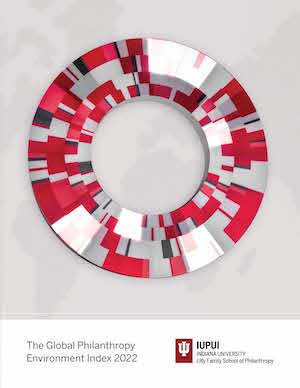When was the last time a major philanthropist or even a grassroots movement decided to tackle war? A hundred years ago, war was a major philanthropic preoccupation and would continue to be so until the end of the Cold War. Rarely do comments on key trends in philanthropy in our still young century touch on war. Unless it is about helping its victims, there is little awareness that philanthropy has played, and could play again, a decisive role in tackling the stubborn institution of war.
One of philanthropy’s aims is to reduce human suffering and, so, our desire to keep civilians safe in war has been led and governed by one of philanthropy’s pillars. A nonprofit association, the International Committee of the Red Cross, is the guardian of the Geneva Conventions and the laws pertaining to the conduct of war – an arrangement that emerged from civil society movements that were appalled by the human devastation caused by industrialized warfare that saw its culmination in two world wars.
History shows philanthropy responding to the effects of war. The helping professions, like nursing and war victims support groups (the precedents of our welfare state) emerged as the philanthropic impulse sought to alleviate the suffering resulting from the violence organized by governments.
You could say that the philanthropic limits on war have been so successful that 21st-century warfare, with fewer battlefield deaths due to superior health interventions, and the claim that modern weapons are designed – if not always utilized – to spare civilians, has made it possible for the United States to be at war for most of this century without war itself becoming a daily concern for many Americans and our civic sector.
But the social movements that spurred the creation of the United Nations did not seek as their end goal just to make war less horrible or less devastating. The UN was founded “to save succeeding generations from the scourge of war” itself. Yale Professor Samuel Moyn argues in his new book that the efforts to make war more humane have helped make war more tenable for much of the American public. The renewed acceptance of war is best demonstrated by Putin’s invasion of Ukraine. Writing on the Ukraine invasion in Foreign Affairs, University of Minnesota Professor Tanisha Fazal writes that “the norm against territorial conquest has been tested in the most threatening and vivid way since the end of World War II.”
We have further been lulled into complacency by the perspective prominently articulated by Steven Pinker, amplified by philanthropic leaders like Bill Gates, showing that violence within and among societies has been on a downward trend for centuries. Pinker sees World War II as an “anomaly" in an irreversible trend toward ever lessening violence. He does not seriously consider the prospect of another anomaly, one that would occur in the context of our vastly expanded destructive potential.
With nuclear weapons alone, of which there are some 10,000, each has the average explosive potential of about 10 times the power of the bomb dropped on Hiroshima. In the 70 years since that last “anomaly,” we have invented and accumulated other methods of killing each other beyond those of nuclear weapons. I am not convinced that Pinker’s thesis can protect us from the unthinkable becoming reality. The Bulletin of Atomic Scientists seems to agree as they have returned the doomsday clock, gauging the likely risk of nuclear conflagration, back to Cold War levels.
But preventing war is not only a vital and under-appreciated grantmaking opportunity. War is the legally sanctioned taking of life by the state, the same entity to which we look to deliver justice. It fundamentally affects who we are and who we seek to be. Philanthropy has worked effectively to place limits on how we use violence and there is heroism in the support of refugees and other victims of war, as diplomacy (official and unofficial) seeks to end the violence in Ukraine and other ongoing wars.
But in the face of the aggression against Ukraine we continue to regret rather than actively reject the armed conflicts of this century that continue to kill and displace those that the civic sector dutifully rushes in to rescue. Violence among states is something we had committed to ending – not because we want to protect states, but because it is the least powerful soldiers and civilians who experience war’s horrors. And intentionally resorting to violence was deemed acceptable only if one was already its victim. Being the first mover to war was just not supposed to be acceptable anymore. After the invasion of Ukraine, it took Ambassador Kimani of Kenya to articulate the moral case against aggression and territorial conquest, even though he represents a country whose borders were drawn by colonial oppressors.
Countries have a way of getting carried away with themselves, becoming too certain of themselves, failing to take account of alternatives, and forgetting the moral principles that justify the power they wield. If philanthropically inclined civil society is not there to serve as a source of alternative ideas, or voices that ask for an accounting, not only is tyranny a danger, but so is foolishness, and the two seem to thrive together.
This is one reason why it is important to have a measure of the space available for philanthropy in countries around the world. The Global Philanthropy Environment Index is one project that seeks to provide this information. There is no guarantee that the space afforded philanthropy will not develop our current kind of moral obtuseness about war itself – historically one of philanthropy’s key concerns. But at least when there is space for civil society, philanthropy has the potential to work against tyranny and foolishness to imagine a morally uplifting future devoted to peace.
It is hard to imagine and implement alternatives to war when there is no civic space to do so. What is our excuse?
Best regards,

Amir Pasic
Eugene R. Tempel Dean




